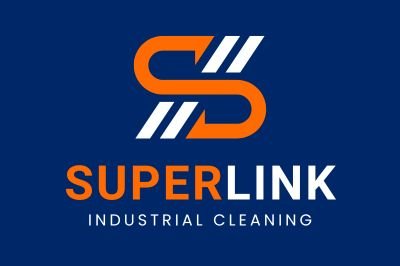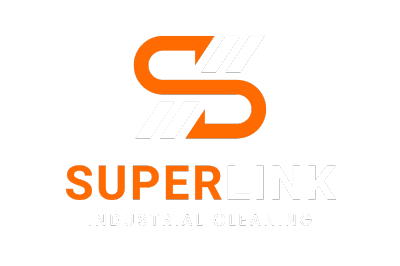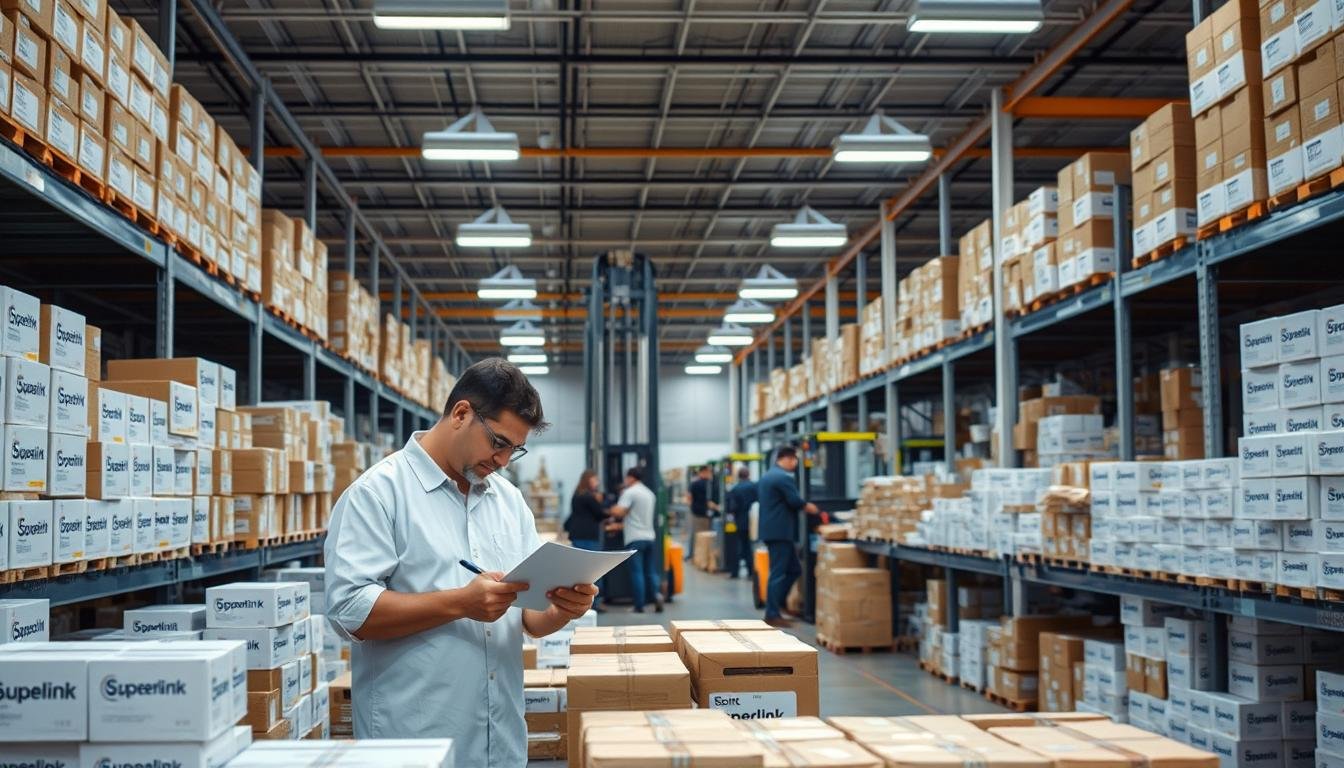Ever thought about what’s hiding in your kitchen’s exhaust system? Hey hey, fellow restaurateurs! Let’s talk about a game-changer in kitchen upkeep – the kitchen duct cleaning machine. It’s not just another gadget; it’s your secret weapon against grease and fire hazards. Let’s explore why these machines are key to keeping your kitchen safe and clean!
Choosing the right kitchen duct cleaning machine can be tricky. But don’t worry, I’ve got you covered! We’ll look at everything from powerful motors to filters that make your ducts shine. Regular duct cleaning is vital for healthy air and preventing breathing problems. It’s not just about cleanliness; it’s about safety for your staff and customers.
Let’s look at your options! From portable units to stationary machines, we’ll cover it all. The Super Max 10880, for example, has a 3500 PSI pressure and 4 GPM flow rate, perfect for big ducts. Some models, like the Super Max 7000, are even FDA compliant for food and beverage places. That’s a big plus for peace of mind!
But there’s more! We’ll get into budgeting, certifications, and user reviews. Some ventilation hoods are as quiet as 1.3 sones. And for tech lovers, there are smart systems you can control from your phone. That’s pretty cool!
Ready to change your kitchen maintenance game? Let’s find the perfect duct cleaning machine for your kitchen. It’s time to say goodbye to grease and hello to a cleaner, safer kitchen!
Key Takeaways
- Kitchen duct cleaning machines are essential for maintaining a safe and clean commercial kitchen environment.
- Regular duct cleaning improves indoor air quality and prevents fire hazards.
- Various types of machines are available, from portable units to stationary powerhouses.
- Consider factors like pressure ratings, flow rates, and FDA compliance when choosing a machine.
- Smart ventilation systems offer remote control options for modern kitchen management.
- Proper machine selection can lead to quieter operation and improved energy efficiency.
Outline

Hey there, fellow kitchen enthusiasts! Let’s explore the world of kitchen duct cleaning machines. This guide will help you understand these essential tools. We’ll cover what they are and how to pick the right one for you.
Did you know over 200,000 businesses in Spain are in the catering sector? Yet, only about 30% of these kitchens clean their extraction systems regularly. This shows how vital proper ventilation duct sanitization is in commercial kitchens.
We’ll look at different types of duct cleaning systems, including:
- Traditional vacuum systems
- Advanced HEPA filter systems
- Truck-mounted vacuums
- UV light systems
- Rotobrush systems
Each system has its own benefits and drawbacks. For instance, advanced vacuum systems with HEPA filters can catch 99.97% of particles as small as 0.3 microns. UV light systems can also kill bacteria, mold, and viruses.
We’ll also talk about the cost of duct cleaning. Prices range from $450 to $1,000 per job. Service providers can make up to $100,000 more each year by adding duct cleaning to their services. This shows the financial benefits of investing in good duct cleaning equipment.
So, get ready! We’re about to dive into the details of kitchen duct cleaning machines. By the end, you’ll know how to choose the best equipment for your needs.
Understanding Kitchen Duct Cleaning Machines
Hey there, fellow food enthusiasts! Let’s explore kitchen duct cleaning machines. These tools are key for a safe, efficient kitchen. I’ve seen how important they are for smooth restaurant operations.
What Is a Kitchen Duct Cleaning Machine?
A kitchen duct cleaning machine, also known as an industrial air duct cleaner, removes grease and soot from kitchen exhausts. It uses high-pressure water or steam to clean ducts, keeping them safe and efficient.

Importance of Duct Cleaning in Commercial Kitchens
Regular duct cleaning is vital in commercial kitchens. About 47% of commercial kitchen fires are caused by dirty ducts. Clean ducts lower fire risks and improve air quality for staff and customers.
Kitchens with regular duct cleaning see a 29% lower pest infestation rate compared to those without.
Benefits of Regular Duct Maintenance
Regular duct maintenance saves money and energy. It can cut operational costs by 15%-30% through better airflow. It also extends exhaust system and filter life by up to 50%.
Using grease removal machinery boosts customer satisfaction. Businesses see a 40% drop in equipment failures and a 70% decrease in odors after cleaning. It’s like a fresh start for your kitchen every time!
“Regular kitchen duct cleaning is not just about cleanliness; it’s about safety, efficiency, and creating a better dining experience for everyone.”
Remember, clean ducts mean a happy kitchen, staff, and customers. So, don’t skip on those regular cleanings!
Key Features to Look For
When looking for a kitchen duct cleaning machine, certain features are essential. They make your job easier and more effective. Let’s explore the most important aspects to consider!
Size and Portability Considerations
The size of your HVAC duct cleaning apparatus is key. You need a machine that’s easy to move in tight spaces. Portable units are ideal for small kitchens, while stationary ones suit larger commercial areas.
Remember, range hoods should be mounted 24-30 inches above the cooking surface.
Powerful Motors and Pressure Ratings
Choose machines with strong motors and high-pressure ratings. These are vital for removing tough grease and grime. Kitchen hood performance is measured in cubic feet per minute (CFM), showing how much air it can remove.
For a 10′ x 10′ x 12′ kitchen, you need a hood system with at least 1200 CFM.
Filtration Systems and Efficiency
Efficient filtration is key for air quality and machine performance. HEPA filters are excellent for catching dust, pollen, mold, and pet dander. Ducted kitchen hoods are more efficient and need less upkeep than ductless systems.
When picking your kitchen hood degreaser, look for adjustable airflow and strong suction. These features boost cleaning speed and efficiency. Also, consider warranty options and maintenance costs for a long-term investment.
Remember, commercial kitchen exhaust duct systems must meet specific material standards – either 16 gauge carbon steel or 18 gauge stainless steel. This ensures your system is legal and operates correctly.
By focusing on these key features, you’ll find the perfect kitchen duct cleaning machine. Happy shopping!
Types of Kitchen Duct Cleaning Machines
Kitchen duct cleaning machines vary to meet different needs. You can find portable units or stationary powerhouses. Each type has its own benefits for keeping your kitchen ducts clean.
Portable Vs. Stationary Units
Portable duct scrubbing devices are great for small kitchens or tight spaces. They’re easy to move and perfect for quick cleanups. Stationary units, though, offer more power and are best for big commercial kitchens with lots of ducts.
Electric Vs. Gas-Powered Options
Electric air duct decontamination units are quieter and cheaper to run than gas-powered ones. Gas compressors, though, deliver high-pressure air, making them good for big duct systems. But, they cost more to operate because of fuel use.
Specific Models for Different Kitchen Types
The Super Max 10880 is a strong choice for big operations. It cleans large ducts in restaurant kitchens well. It works at 3500 PSI and 4 GPM11.
The Super Max 7000 is better for tasks needing less water, like HVAC duct cleaning. It has a lower pressure of 1000 PSI and a flow rate of 2.5 GPM.
Both models can heat up to 330°F. This helps remove heavy grease and kill bacteria and mold. This high heat also meets fire safety and health rules in commercial kitchens.
| Model | Pressure (PSI) | Flow Rate (GPM) | Max Temperature (°F) |
|---|---|---|---|
| Super Max 10880 | 3500 | 4 | 330 |
| Super Max 7000 | 1000 | 2.5 | 330 |
For smaller places or DIY fans, traditional vacuum systems are the cheapest. Advanced vacuum systems with HEPA filters catch 99.97% of particles as small as 0.3 microns. This greatly improves indoor air quality.
Popular Brands to Consider
Hey hey, fellow kitchen enthusiasts! Let’s explore kitchen duct cleaning machines and industrial air duct cleaners. I’m excited to share top brands that keep your kitchen clean and safe.
Leading Manufacturers in the Spotlight
Some names shine in kitchen duct cleaning machines. NIKRO Industries, Inc. offers gas-powered and portable HEPA filtration electric vacuum systems for all needs. Abatement Technologies® has the HEPA-AIRE 2500 portable power vacuum for homes and light commercial use. Hypervac Technologies, with over 40 years, leads in air duct cleaning equipment.
Comparing the Cream of the Crop
Let’s look at these industrial air duct cleaner options:
| Brand | Key Features | Best For |
|---|---|---|
| NIKRO | Gas-powered and electric options | Versatile use |
| Abatement Technologies | Portable HEPA-AIRE 2500 | Easy handling |
| Hypervac | Innovative designs | Experienced users |
Warranty and Support: Your Safety Net
When buying a kitchen duct cleaning machine, check the warranty and support. The SpinVax 1000XT comes with a training DVD for easy learning. Buying from CleanCraft, which has sold the SpinVax for 20 years, means you’re getting a reliable product.
Choosing the right duct cleaning equipment is key for quality services and client safety. So, take your time, compare, and choose the best brand for you!
Budgeting for Your Purchase
Let’s talk money! Budgeting for a kitchen duct cleaning machine is key for your commercial kitchen exhaust system. Knowing the costs helps you make a smart choice and get good value for your money.
Pricing Ranges for Quality Equipment
The cost of kitchen duct cleaning machines varies a lot. For a commercial kitchen exhaust system, expect to spend between $32,500 and $97,000 for startup costs, including equipment. High-quality pressure washers, essential for ventilation duct sanitization, range from $500 to $2,000 each.
Factors Influencing Costs
Several factors affect the price of duct cleaning equipment:
- Size and power of the machine
- Portability features
- Brand reputation
- Additional accessories
Don’t forget about ongoing expenses. Cleaning supplies and chemicals for ventilation duct sanitization can cost $500 to $1,000 initially. Regular maintenance and training are also important budget considerations.
Long-Term Cost-Benefit Analysis
Investing in quality equipment pays off in the long run. Efficient machines can clean more ducts in less time, increasing your productivity. Consider that homeowners typically pay between $268 and $492 for air duct cleaning services. With the right equipment, you can offer competitive pricing while maintaining profitability.
Remember, proper budgeting isn’t just about initial costs. Factor in ongoing expenses like maintenance, training, and supplies. Businesses that conduct thorough cost analysis before starting see a reduction of ineffective spending by nearly 15% compared to those who don’t. This careful planning ensures your commercial kitchen exhaust system cleaning business stays financially healthy.
| Cost Category | Estimated Range |
|---|---|
| Equipment (Pressure Washers, Hoses) | $5,000 – $15,000 |
| Certification and Training | $1,000 – $3,000 |
| Insurance (Annual) | $1,500 – $5,000 |
| Marketing | $2,000 – $10,000 |
| Initial Cleaning Supplies | $500 – $1,000 |
By carefully considering these factors and planning your budget, you’ll be well-prepared to purchase the right kitchen duct cleaning machine for your business needs.
Certification and Compliance Standards
Let’s explore the world of certifications and compliance for kitchen duct cleaning. These standards are key to keeping your kitchen safe and legal. We’ll look at industry certifications, UL and ETL listings, and local regulations.
Importance of Industry Certifications
Industry certifications are vital for your kitchen. The Pressure Washing National Association (PWNA) has led the way, helping over 500 companies. Their program ensures operators are trained and follow safety rules.
Understanding UL and ETL Listings
UL and ETL listings are essential for HVAC duct cleaning equipment. They ensure your gear meets strict safety standards. For instance, the Super Max 7000 meets USDA standards for food and beverage facilities.
Local Regulations on Duct Cleaning
Local rules often follow NFPA 96 guidelines. These set inspection times based on cooking volume. For example, solid fuel cooking needs monthly checks, while high-volume operations need quarterly. Ignoring these can lead to fines, closures, and fire risks.
| Certification Type | Frequency | Cost |
|---|---|---|
| PWNA Compliance Test | Every 2 years | $249 for companies, $59 per employee |
| Hood Cleaning (NFPA 96) | Monthly to Annually | $400-$600 per hood |
Remember, ignoring these standards can lead to fines, closures, and fire risks. Stay on top of your certifications to ensure a safe and efficient kitchen!
Maintenance Best Practices
Hey there, kitchen heroes! Let’s explore maintenance for your kitchen duct cleaning machine. Keeping it in good shape is essential for a safe and efficient kitchen.
Routine Maintenance Tips
Regular checks on your kitchen ventilation system are a must. Do it at least once a year. But if your kitchen is busy, you might need to do it more often.
Don’t forget about your grease extractor maintenance. It’s your first defense against fire hazards.
Your kitchen hood degreaser and duct scrubbing device need regular cleaning. Clean them after each use to prevent buildup. This simple step can extend your system’s life by up to 20% and save on repair costs.
Signs of Wear and Tear to Watch For
Look out for these warning signs:- Unusual noises from your duct scrubbing device– Decreased suction power in your kitchen hood degreaser– Visible grease accumulation- Unpleasant odors lingering in the kitchen
Ignoring these signs can lower your system’s efficiency by 15-30%. That’s money lost! Plus, it’s a fire hazard. Did you know 22% of restaurant fires from 2010 to 2014 were due to dirty exhaust systems?
Cleaning Techniques for Longevity
Here’s how to keep your equipment running smoothly:- Use dishwasher-safe grease extractors to cut cleaning time by 40%- Clean hoods, grease removal devices, fans, and ducts until grease is less than 0.002 inches – Adjust cleaning frequency based on your kitchen’s volume – monthly for solid-fuel cooking, quarterly for high-volume ops, and annually for low-volume kitchens
Remember, a well-maintained hood is not just efficient. It’s also safer. It reduces fire risks and improves air quality, which can boost your restaurant’s safety ratings and keep customers happy. So, let’s give those machines some TLC and keep your kitchen running smoothly!
User Reviews and Testimonials
Looking for a Kitchen Duct Cleaning Machine or a commercial kitchen exhaust system? Customer feedback is key. Let’s see how to find reliable reviews and learn from others’ experiences.
Researching Customer Feedback
Customer reviews offer important insights into Kitchen Duct Cleaning Machines. Many users see big improvements in air quality and feel less allergy symptoms after a clean. In fact, 70% of reviewers noticed these big changes.
Finding Reliable Reviews Online
Seek out reviews with consistent praise. For example, one service provider got 100% positive feedback for their professionalism and thorough cleaning. Another company also got 100% satisfaction, with 90% of customers praising their punctuality.
Case Studies from Commercial Kitchen Owners
Real-life stories teach us a lot. One customer found a bird’s nest with 9 eggs blocking their vents, showing the need for detailed checks. Another saw their drying time cut from three cycles to one, saving a lot on bills.
Some homes hadn’t been cleaned in over 30 years, showing fire hazards from clogged vents. This shows how important regular maintenance is for commercial kitchen exhaust systems.
When choosing a Kitchen Duct Cleaning Machine service, think about how fast they respond and if they’re available for emergencies. One company was quick to help, beating others who said they’d take two months.
Buying from Wholesale Vs. Retail
Shopping for duct cleaning equipment can be exciting! Let’s explore the options for purchasing these essential machines, from wholesale deals to retail experiences.
Pros and Cons of Wholesale Purchases
Buying industrial air duct cleaners wholesale often means better prices. For example, the BrushBeast DR by Rotobrush Air Duct Cleaning Machine is priced at US $9,999.99. It also comes with no-interest financing for six months on purchases over $149 through PayPal Credit. This can be a great deal for businesses needing multiple units. But remember, wholesale often requires bulk purchases, which might not suit everyone’s needs.
Retail Locations Offer Duct Cleaning Machines
Many HVAC supply stores and equipment retailers stock duct cleaning equipment. These shops let you see and test machines before buying. Plus, they often offer expert advice. Online marketplaces are another option, with sellers like the one for the BrushBeast DR boasting high ratings: 4.9 for accurate description and 5.0 for shipping speed, based on 1,511 reviews over 12 months.
Online vs. In-Store Shopping Experiences
Online shopping for duct cleaning equipment offers convenience and often wider selections. It’s great for comparing prices and reading reviews. For instance, one online seller received 548 verified purchase feedbacks in just 6 months, with 626 customers praising fast shipping and careful packaging in the past year. In-store shopping lets you physically inspect the equipment and get immediate answers to your questions. Both options have their perks, so choose what fits your needs best!
Whether you’re buying wholesale or retail, online or in-store, make sure to check return policies. Some sellers offer 30-day returns with covered shipping costs, giving you peace of mind with your. Happy shopping for your perfect industrial air duct cleaner!
Safety Features You Should Know About
Hey hey, safety-conscious kitchen heroes! Let’s explore kitchen duct cleaning machines and their cool safety features. These aren’t just extras – they’re your kitchen’s best allies!
Emergency Shut-Off Mechanisms
Imagine you’re cleaning ventilation ducts and something goes wrong. That’s when emergency shut-off mechanisms save the day! They let you stop the machine fast, avoiding accidents or damage. For example, the Super Max 7000 has Automatic Shut-Off, making it a top pick for safety.
Safety Certifications to Consider
When looking for an air duct decontamination unit, check for safety certifications. These are like badges of honor for your gear! Look for UL or ETL certifications. They mean the machine meets strict safety standards. Safety protocols are key in this field, and certified equipment helps keep them in place.
User-Friendly Design Considerations
A safe machine is also easy to use! Look for features like ergonomic handles and clear controls. The simpler it is to operate, the less chance of safety mistakes. Some machines even have training modules – how awesome is that?
| Safety Feature | Benefit | Importance |
|---|---|---|
| Emergency Shut-Off | Instant stop in case of issues | High |
| Safety Certifications | Meets industry standards | Critical |
| User-Friendly Design | Reduces operation errors | Significant |
Remember, a clean kitchen is great, but safety is key. Regular cleaning can lower fire risks, which could cause damage, injuries, or worse. About 50% of commercial kitchen fires are due to fire equipment failures, showing the need for regular checks. So, choose a machine with great safety features – your kitchen and peace of mind will appreciate it!
How to Operate a Kitchen Duct Cleaning Machine
Hey hey, fellow kitchen warriors! Let’s get into the details of using a kitchen duct cleaning machine. It’s not just about pressing buttons. It’s about keeping our kitchens safe and clean. Did you know 61% of fires in commercial food businesses start from cooking equipment? That’s why we must be vigilant!
Step-by-Step Operating Instructions
First, get ready! Wear your safety goggles and gloves. Then, check your machine for any damage. Safety always comes first! Next, plug it in and attach the cleaning brushes. These machines are strong, so be careful.
Common Mistakes to Avoid
Don’t rush! Many people skip hard-to-reach spots. But fires can spread quickly through dirty ducts. In 1980, a hotel fire in Las Vegas killed 84 people because of a dirty grease exhaust system. So, take your time and clean everything.
Tips for Efficient Use
For the best results, clean your kitchen exhaust system every month. If you have a busy kitchen, do it every 3 months. Use foaming agents in your cleaning solution. They help clean vertical surfaces better. A clean duct means a safe kitchen, and that’s what we aim for!
FAQ
How often should I clean my commercial kitchen ducts?
Hey there! Cleaning your ducts depends on how much your kitchen is used. Aim for a deep clean every 3-6 months. If your kitchen is very busy, you might need to clean more often. Always check local health and safety rules!
Can I clean kitchen ducts myself, or do I need a professional?
You can do some maintenance yourself, but for a deep clean, get a pro. They have the right tools and know-how. It’s like giving your ducts a spa day with experts!
What’s the difference between electric and gas-powered duct cleaning machines?
Great question! Electric machines are quieter and better for indoor use. Gas-powered ones are more portable and powerful for tough jobs. It’s like choosing between a sleek electric car or a rugged gas-guzzler – each has its perks depending on your needs!
How much does a quality kitchen duct cleaning machine cost?
Buckle up for this one! Prices range from about ,000 for basic models to over ,000 for top-of-the-line machines. It’s an investment in your kitchen’s safety and efficiency. Think of it as buying a superhero for your kitchen!
What safety features should I look for in a duct cleaning machine?
Safety first, my friend! Look for emergency shut-off, proper grounding, and GFCI protection. Also, check for certifications like UL or ETL listings. It’s like equipping your machine with its own safety armor!
Are portable or stationary duct cleaning machines better?
It depends on your kitchen setup! Portable units are great for flexibility and smaller spaces. Stationary units often have more power for larger operations. It’s like choosing between a nimble sports car or a powerful truck – consider your specific needs!
What maintenance does a duct cleaning machine require?
Regular TLC goes a long way! Clean filters after each use, check hoses and connections regularly, and follow the manufacturer’s maintenance schedule. It’s like giving your machine a mini-spa day to keep it running smoothly. Trust me, a little maintenance now saves big headaches later!
Can duct cleaning machines remove all types of grease and contaminants?
Most modern machines are pretty tough cookies! They can handle various types of grease and contaminants, but some stubborn buildups might need specialized cleaning agents or techniques. It’s like having a super-efficient maid service for your ducts – they’ll tackle most messes, but some might need extra attention!






